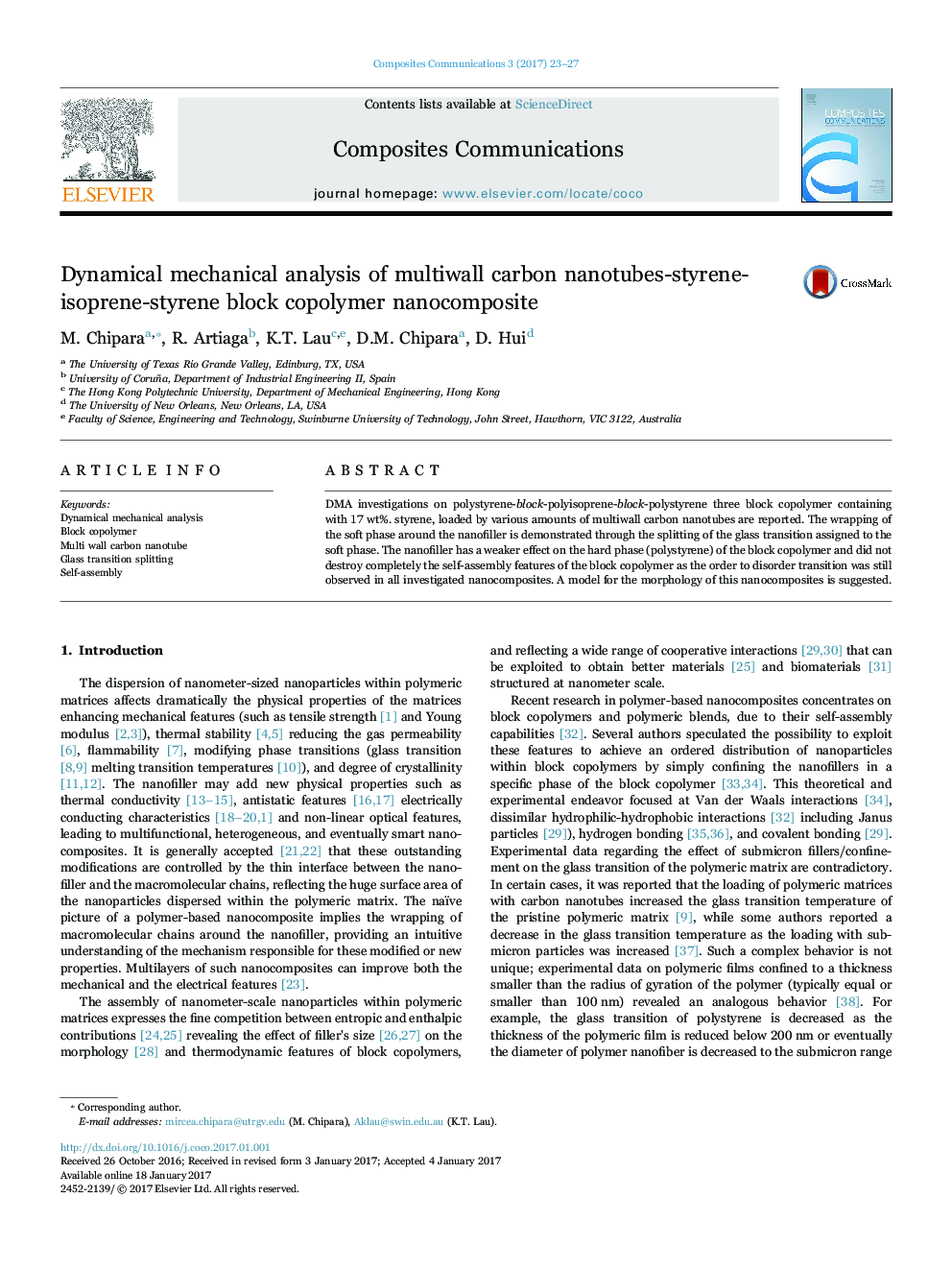| Article ID | Journal | Published Year | Pages | File Type |
|---|---|---|---|---|
| 5432812 | Composites Communications | 2017 | 5 Pages |
â¢Multiwall carbon nanotubes have been dispersed within polystyrene-block polyisoprene-block polystyrene matrix.â¢Glass transition of the soft phase is split by the addition of the nanofiller.â¢Multiwalled carbon nanotubes are preferentially trapped in the soft phase and eventually wrapped by the soft chains (polyisoprene) of the block copolymer.â¢The self-assembly capabilities of the block copolymers are not affected (up to 1.7% multiwalled carbon nanotubes).
DMA investigations on polystyrene-block-polyisoprene-block-polystyrene three block copolymer containing with 17Â wt%. styrene, loaded by various amounts of multiwall carbon nanotubes are reported. The wrapping of the soft phase around the nanofiller is demonstrated through the splitting of the glass transition assigned to the soft phase. The nanofiller has a weaker effect on the hard phase (polystyrene) of the block copolymer and did not destroy completely the self-assembly features of the block copolymer as the order to disorder transition was still observed in all investigated nanocomposites. A model for the morphology of this nanocomposites is suggested.
